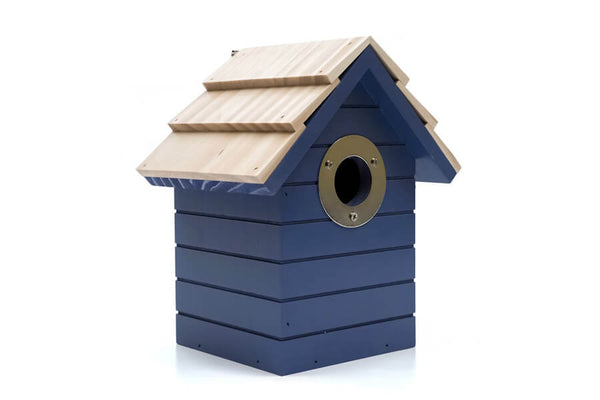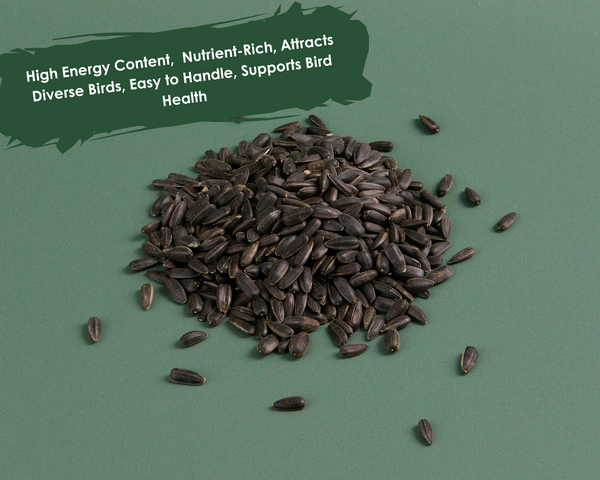Why is Wildlife Conservation Important?
A recent study by the State of Nature found that 1 in 6 species in the UK are at risk of becoming extinct and this is terrible news. This continuing decline of endangered species shows that there is an uncertain future for many of the animal species we know and love.
Another study found that only 53% of the UK's original natural habitat are left, compared to 79% in other countries. Conservation efforts are crucial to protect endangered wildlife and save these threatened species.
Conserving wildlife must be at the top of this list for governments, and these reports are a reminder of this. It's time to protect plant and animal species.
The Definition of Conservation
Wildlife Conservation aims to preserve and protect animals, plants and the habitats they live in. Overpopulation, burning fossil fuels and deforestation are some of the many ways that humans are abusing the natural resources available and that is taking its toll on animal species and their natural habitat around the world.
Conservation efforts aim to help reverse this and provide animals with a safe environment where they can thrive.
The Challenges Wild Animals Face
Climate Change

On the IUCN red list, over 10,000 species are affected by climate change. This is the long term shifts in temperature and weather patterns across the world. Since the 1800s, human beings have been driving climate change through burning fossil fuels and other actions.
Warmer weather, droughts and flooding are issues being faced everywhere and animals are suffering. For example, in the UK, much loved animals like badgers, moles and hedgehogs eat invertebrates to survive. These invertebrates survive in wet conditions, and with more and more droughts, they are becoming scarce - this will lead to a lack of food sources and will affect the natural cycle of these animals.
The shifts in temperature and season is also affecting when birds migrate which has an impact on food availability on their travels. Without ample food sources on their long journeys - these birds will not make it.
If temperatures continue rising and we don't do anything about it, more and more species will face extinction.
In the UK, the Climate Change Act commits the government to reducing green house gasses by 2050 to try and save the planet for future generations.
Agriculture
In the UK, agriculture accounts for 70% of land use and intensive farming is really harmful for wildlife. This is farming to produce as much food as quickly, and as cheaply, as possible. It's actually been identified as one of the biggest factors in the decline of farmland birds and other wildlife animals.

Intensive farming has resulted in the loss of many natural habitats such as meadows, trees and hedgerows. These habitats are all vital for bees and other species of pollinators. With out these insects, there will be a knock on effect on the rest of the environment.
Plastics

It has been estimated that by 2050 there could be more plastic in the ocean than fish. This shocking statistic shows just how much of an impact plastic is having on our environment.
With many sea animals mistaking plastic for food and eating it, many animals are dying. Did you know that approximately 90% of seabirds have ingested plastic? When smaller animals ingest plastic, this can travel up the food chain. Animals have also been found caught up in and injured by plastic.
Wildlife populations are facing the effects of plastic in their environment and it's time to pass on plastic.
The Role of The Government
In the UK, the Government has an important role to play in the conservation and protection of animals. It's not just the UK, across the world government have to have legislation in place to protect animals, for example, in the US they have an Endangered Species Act to protect various endangered species.
Legislation

The UK government enacts various laws to protect wildlife and their habitats.
-
Wildlife and Countryside Act 1981: This is the primary legislation for wildlife protection in the UK. It provides protection for various species and their habitats and regulates activities that may harm wildlife.
-
Conservation of Habitats and Species Regulations 2017: These regulations implement the EU’s Habitats Directive and Birds Directive, offering protection to important habitats and species.
-
Environment Act 2021: This recent legislation focuses on improving air and water quality, protecting biodiversity, and managing waste and resource efficiency.
Regulatory Role
The UK government regulates activities that could impact wildlife.
-
Planning and Development Controls: Local planning authorities must consider biodiversity in their planning decisions, ensuring that development projects do not harm important habitats or species.
-
Marine and Coastal Access Act 2009: Regulates marine conservation zones to protect marine wildlife and habitats.
Funding Role
The UK government allocates funds for conservation initiatives:
-
Environmental Land Management Schemes (ELMs): Provide financial incentives to farmers and land managers to implement practices that benefit wildlife and biodiversity such as creating new habitats or not building on the natural environment to protect existing species.
-
Grants and Funding Programs: Such as the Green Recovery Challenge Fund, which supports nature conservation projects.
Conservation Efforts In the UK
In the UK, there are many charities and businesses that are are the forefront of conservation efforts.
The RSPB plays a really crucial role in conservation in the UK. Across the UK, the RSPB manage a network of nature reserves, such as Minsmere in Suffolk, to protect species in these areas such as Puffins and Spoonbills. The RSPB is also collaborating with farmers across the country to promote nature friendly farming.
In Cornwall, the reintroduction of Beavers is a notable example of a successful conservation effort. The Cornwall Beaver Project demonstrates the potential ability of re-wilding and conservation.
Studies have confirmed the effectiveness of these conservation efforts. Research has shown that conservation interventions, such as habitat restoration and invasive species control, have had positive impacts on biodiversity. Although global funding for conservation remains below the necessary levels, the successes in many local projects highlight the significant benefits of dedicated conservation actions.
Conservation Efforts Worldwide
Global conservation efforts encompass a wide range of initiatives aimed at protecting biodiversity and addressing the illegal wildlife trade and wildlife trafficking.
These efforts are implemented through international cooperation, innovative financing, and targeted actions and are spearheaded by organisations such as the World Wildlife Fund.
Wildlife Trade Regulation and Monitoring
The global wildlife trade is regulated by the Convention on International Trade in Endangered Species of Wild Fauna and Flora (CITES), which aims to ensure that international trade does not threaten species' survival.
Over the past decade, more than 1.3 billion plants and animals were traded internationally, with a significant portion still sourced from the wild. This trade includes a wide variety of species, such as orchids, snowdrops, and various animal species like geckos and sharks. Positive outcomes from regulated trade include the stabilisation of certain wild populations and reduced pressures through captive breeding programs.
Combating Illegal Wildlife Trade
Illegal wildlife trade (IWT) is a major issue, with an estimated value of $7 to $23 billion annually, making it one of the most lucrative criminal activities.
Key drivers include poaching, habitat destruction, and demand for wildlife products for traditional medicine, food, and status symbols.
The Global Environment Facility (GEF) addresses IWT through the Global Wildlife Program (GWP), which operates in multiple countries across Africa and Asia. The program focuses on reducing poaching, enhancing law enforcement, and curbing demand through awareness campaigns and policy measures.
Innovative Conservation Financing
Innovative financing mechanisms are crucial for sustainable conservation efforts. For instance, the Tiger Conservation Coalition, alongside the Royal Government of Bhutan, has committed to mobilizing $1 billion over the next decade to conserve tiger habitats.
This initiative highlights the importance of securing funds for the long-term protection of species and their ecosystems. Such funds support not only biodiversity but also the livelihoods of local communities, promoting a holistic approach to conservation (IUCN).
How Can You Help?

Although it may only seem small, there are many things we can do in our garden to contribute to efforts to safe endangered species from habitat loss and other things. Whilst we may not be able to help the giant pandas in our outside spaces, we can help local birds and different species unable to find homes, or that struggle to find food.
Install bird nest boxes. They provide a safe breeding space for cavity nesting birds and help the world's wildlife continue to have successful breeding seasons and thrive. If you can, place the box in a safe location as far away from predators.
Supplement natural food sources and seeds for birds and other wildlife - such as putting out hedgehog food, especially during winter or migration periods when food is scarce. Invest in tube feeders for small birds, platform feeders for larger birds, and suet feeders for high-energy needs.
Plant Native Species, they provide food and shelter for local species, including insects, birds, and mammals. Native plants require less water and maintenance, and they support the local ecosystem better than non-native species.
Donate to organisations that protect wildlife and habitats, such as the World Wildlife Fund (WWF), The Nature Conservancy, or local wildlife charities. You can also participate in local conservation projects, such as habitat restoration, wildlife monitoring, and community education programs.










